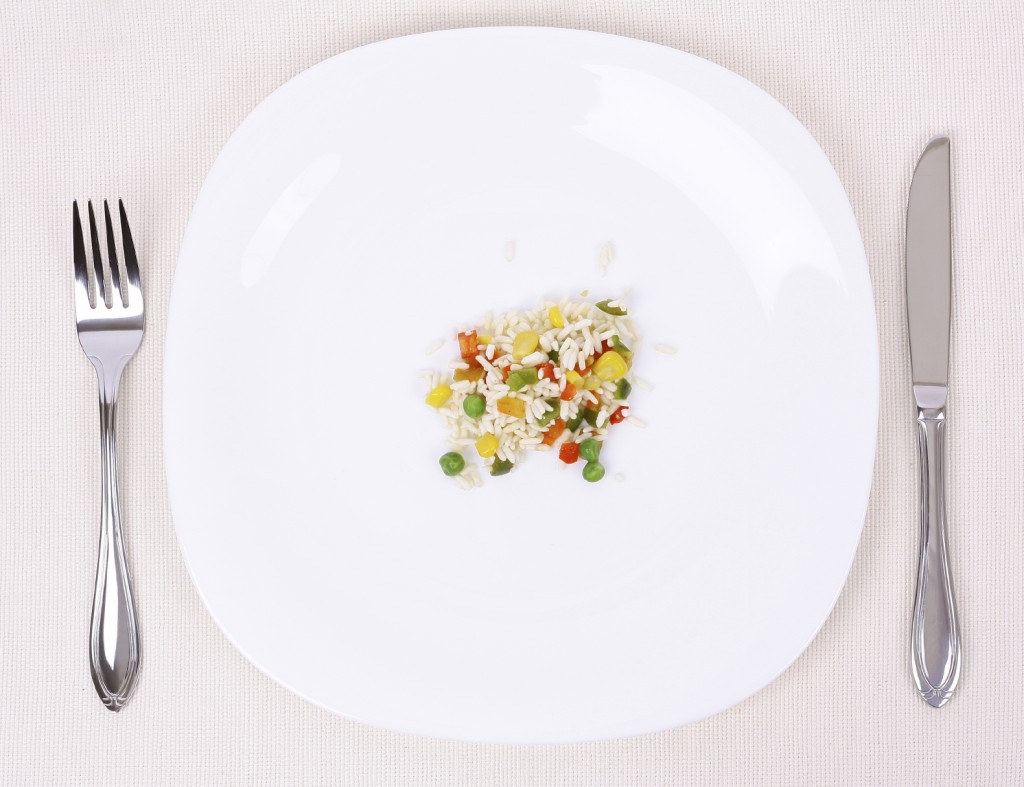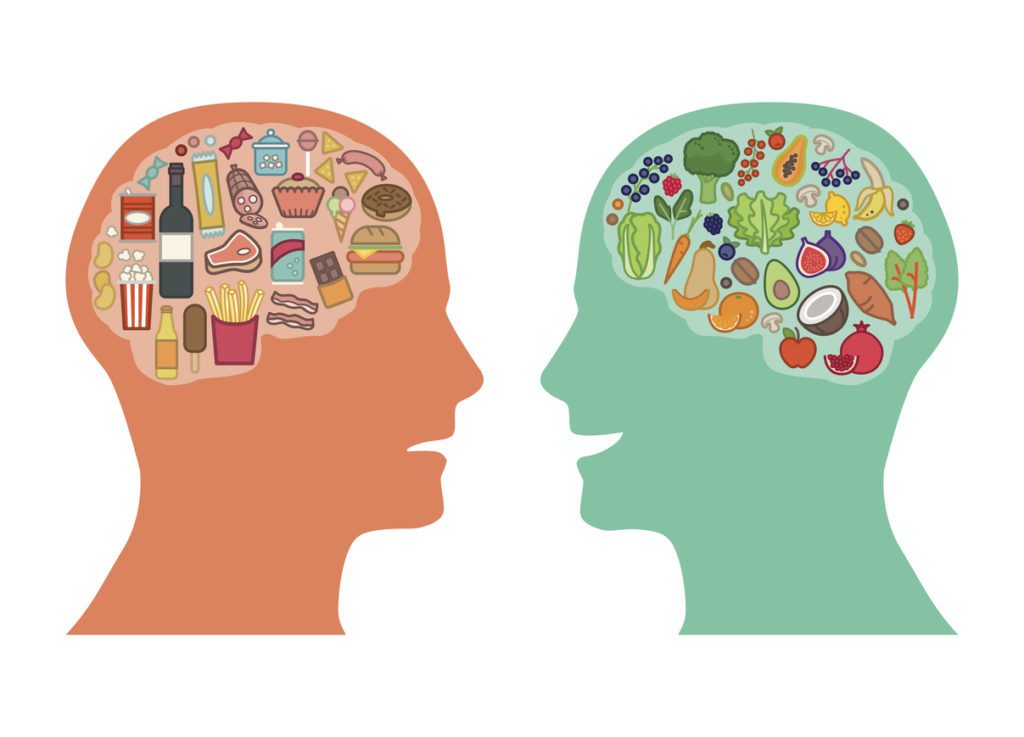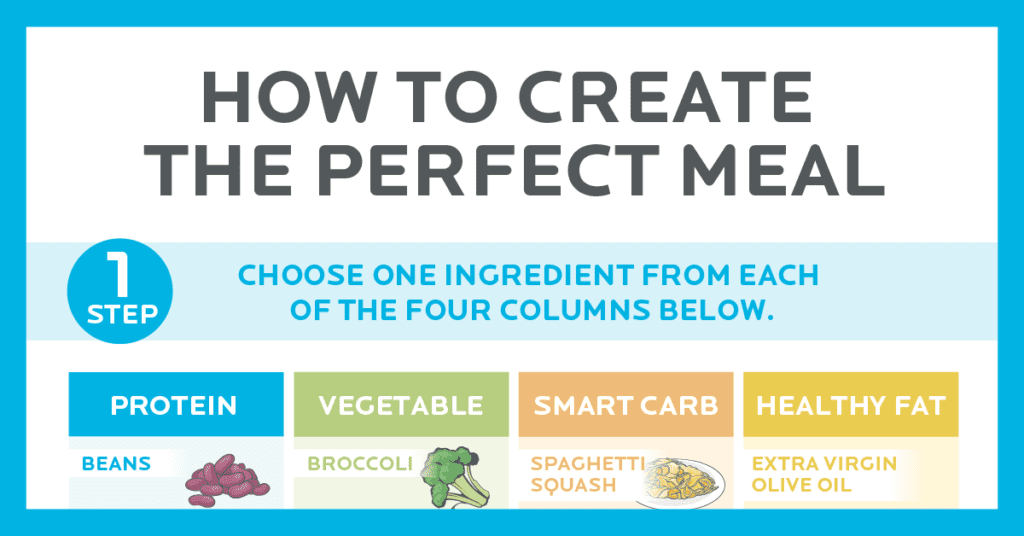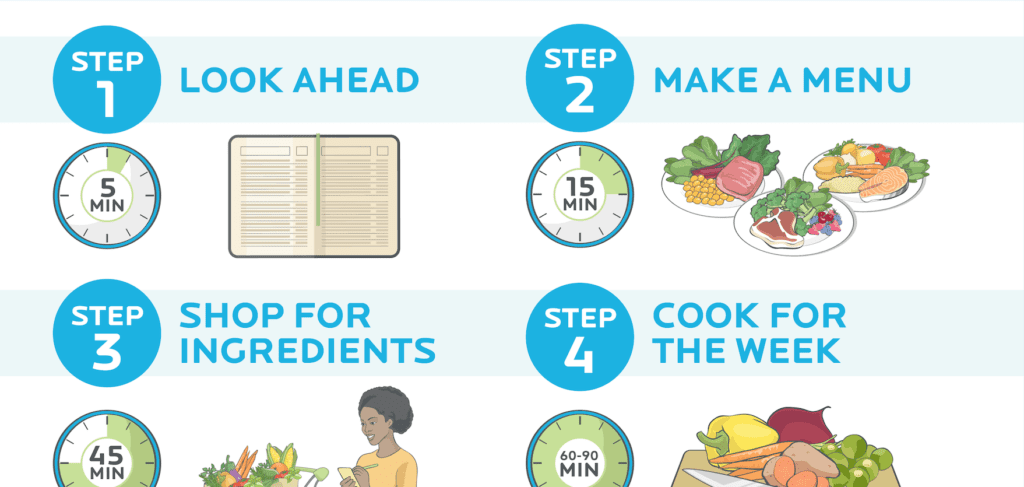If you believe the buzz, the keto diet can speed fat loss, curb appetite, enhance performance, and cure nearly any health problem that ails you. Sound too good to be true? It probably is.
++++
Definition | History | What is ketosis? | How to do keto | What can you eat? | Keto menu examples | Benefits | Downsides | Side effects | Is keto right for you?
Wouldn’t it be awesome if butter and bacon were “health foods?”
Maybe with a side of guacamole and some shredded cheese on top?
“I’m doing this for my health,” you could purr virtuously, as you topped your delectably marbled, medium-rare steak with a fried egg.
Well, many advocates of the keto diet (formally known as the ketogenic diet) argue exactly that: By eating a lot of fat and close to zero carbohydrates, you too can enjoy enhanced health, quality of life, performance, brain function, and abs you can grate cheese on.
Ok. But does the diet work for everyone?
In this article, we’ll answer that question (and more), but first:
How to read this article
If you’re just curious about keto:
- Feel free to skim and learn whatever you like. (Use the top navigation bar to jump to sections that interest you.)
If you want to change your body and/or health:
- You don’t need to know every detail. Just get the general idea.
- Check out our advice at the end.
If you’re an athlete interested in performance:
- Pay special attention to the section on athletic performance.
- Check out our advice for athletes at the end.
If you’re a fitness pro, or interested in geeking out with nutritional science:
- We’ve given you some “extra credit” material in boxes throughout.
- Check out our advice for fitness pros at the end.
What is a ketogenic diet?
Before we get into the nitty gritty, let’s start with a basic definition:
The ketogenic diet—often shortened to “keto”—is very low in carbohydrates, and very high in fat.
It’s also highly restrictive, with a low to moderate protein intake.
Many people (mistakenly) consider any diet low in carbohydrates a keto diet. But that’s not quite right.
A ketogenic diet typically consists of about 70 to 90 percent of calories from fat, with the remaining 10 to 30 percent of calories coming from a mix of carbohydrates and protein combined.
As the diet’s gotten more popular though, several keto and low-carb diet “variants” have emerged, each with their own macronutrient ranges.
(For more on the different versions of keto, plus how to coach someone through the diet, read: The Keto diet plan: Your complete how-to guide)
In this article, we’ll be covering the “original” keto diet. We’ll discuss the science behind it, its uses, and its drawbacks. And also, how it became a “thing” in the first place…
It all started with the brain.
If you called Client Care at Precision Nutrition in years past, you might have spoken to Lindsay.
Aside from being a helpful and friendly voice on the other end of the phone, Lindsay is also a tireless advocate for a health condition that has shaped her life in many ways: epilepsy.
Epilepsy is an ancient brain phenomenon, known to medicine thousands of years ago. To manage it, our Neolithic ancestors drilled holes in one another’s skulls, perhaps trying to let the bad stuff out—a practice known as trepanation.
Around 400 BCE, the ancient Greek doctor Hippocrates observed a man who had seizures for five days. On the sixth day, he noted, as the patient “abstained from everything, both gruel and drink, there were no further seizures.”
About 1,400 years later, in 1000 CE, the famous Persian physician Avicenna coined the term “epilepsy.” The word comes from the ancient Greek verb epilambanein (to seize or attack). Avicenna speculated that “overfeeding” might be a risk factor for epilepsy.
By 1911, a pair of Parisian doctors were trying fasting as a treatment for children with epilepsy, and in the United States, physical culturist Bernarr McFadden was claiming that fasting for three days to three weeks could cure anything.
Despite not having the tools and insight of modern neuroscience, these and other people who explored fasting as dietary prescriptions for neurological disorders were on to something.
We now know that there may be a dietary connection between epilepsy and what we eat (or don’t). (This may be true for other brain disorders as well.)
Unfortunately, fasting isn’t fun. We evolved with a pretty strong aversion to starvation, and our brains and GI tracts have lots of ways to make sure we eat enough.
Which raises the question:
Could we get the health benefits of fasting another way?
Ketogenic diet: The origin story
In 1921, two things happened.
One: Endocrinology researcher Rollin Woodyatt noted that both starvation and a diet that was very low in carbohydrates and very high in fat triggered the same chemical environment. In both situations, the body began to use ketones—instead of glucose—as a primary energy source.
Two: Dr. Russell Wilder wondered…
Could a person get the health benefits of fasting without actually fasting?
He and other doctors at the Mayo Clinic experimented with what Wilder called the “ketogenic diet” during the early 1920s. Not only did children with epilepsy seem to improve overall with this type of diet, they seemed to think and behave better as well.
Proven by several notable medical authorities, a ketogenic diet as a treatment for childhood epilepsy found its way into medical textbooks by around 1940, and stayed there throughout the 20th century.
Nowadays, aging, contact sports, and modern warfare present us with new populations of people whose brains might benefit from a ketogenic diet:
- people with neurodegenerative disorders (such as multiple sclerosis, Parkinson’s, and Alzheimer’s)
- people with traumatic brain injury (TBI) from events such as explosions or concussions
Bodybuilders discover the ketogenic diet.
There was another group of people who became curious about ketogenic diets sometime in the 1980s and 1990s: bodybuilders and physique athletes.
These folks were less concerned about brain health or longevity. They wanted to be ripped.
The ketogenic diet seemed like a magic bullet: a way to eat butter, bacon, and cream, and still get abs.
Today, the ketogenic diet is new again.
Physique- and performance-conscious people, as well as people looking to maximize lifespan and life quality, have rediscovered this old-school dietary paradigm and are wondering:
- Could a ketogenic diet help me perform better?
- Could a ketogenic diet help me live longer?
- Could a ketogenic diet help me look great on the beach?
The answer?
It depends. (Don’t you hate that? But it’s true.)
To understand why, let’s dig a little deeper.
What is ketosis?
To fully understand a ketogenic diet, you need to know what ketosis is.
Ketosis describes a state in which your body is using ketones—instead of carbohydrates—as its primary fuel source.
So what, then, are ketones?
Ketones describe a group of compounds with a specific chemical structure, and our body can make them through a complex biochemical pathway.
We can use two types of ketones as energy sources, acetoacetate and D-β-hydroxybutyrate. (The β sign means “beta.”)
The term “ketone” was actually coined around 1850 by German chemist Leopold Gmelin. (See? Not as new as you’d think!)
The pathway to ketosis
When the conditions are right (for instance, during starvation or fasting, or when our carb intake is very low):
- Our body releases fatty acids from our stored body fat.
- These fatty acids enter other cells.
- Fatty acids are combined with co-enzyme A to form acetyl-CoA chains.
- These chains move into the mitochondria (our cells’ energy factories).
- The chains are broken down into acetyl-CoA units by a sequence of reactions known as β-oxidation.
- Chemical magic happens.
- Acetyl-CoA forms your friends the ketones: acetoacetate and β-hydroxybutyrate, along with acetone (the same smelly stuff in your nail polish remover).
- Ketones are released by the liver into the blood.
- Almost any cell that needs energy can grab it from these circulating ketones. Our brain will be the greediest for these nummy little molecules.
(FYI, supplementing with ketones can also induce ketosis, but in this article, we’ll only cover ketosis when it’s the result of dietary changes.)
Some people like to think of ketones (a.k.a. ketone bodies) as the fourth energy source for humans, in addition to carbohydrates, fats, and proteins.
That’s technically true, but the alcohol in booze (aka ethanol) can also be used for energy.
Um, so, just because we can metabolize something doesn’t always mean we should.
The ketogenic diet: Ketosis without fasting
Most people frown on starving children with epilepsy, so a ketogenic diet is a clever workaround:
By cutting off the body’s carbohydrate (aka glucose) supply, but providing energy and nutrients in the form of fat and a little protein, we can get the same effects as straight-up starvation: ketosis.
As with starvation, it usually takes some time to get into ketosis once we stop eating carbs and ketogenesis gets going.
Interestingly, how quickly ketosis happens varies by age and species.
Other mammals don’t seem to go into ketosis nearly as quickly as humans. (Your friendly neighborhood hibernating bear or squirrel who doesn’t eat for weeks to months at a time? No ketosis.)
Human babies, on the other hand, go into ketosis within a few hours of not eating.
This may have to do with our energy-hungry human brains. About 20 percent of our overall energy intake is devoted to feeding our brains. And although bears and squirrels are clever enough to get into the garbage, they don’t have brains as large as we do.
Ketogenesis is a human backup system that provides enough energy (via ketone bodies) to the ol’ noggin in times of starvation.
And it may be this particular evolutionary adaptation—which perhaps emerged to keep said noggin fed when food was scarce—that also enables the brain-benefiting effects of the ketogenic diet.
How to do keto: Building the keto plate
So… what does “low carb, very high fat” look like, exactly?
To give you a better idea of the ketogenic diet in real life, let’s compare it to the macro splits of several different types of meals:
| Protein | Carb | Fat | |
|---|---|---|---|
| Mixed Meal | ~30% | ~40% | ~30% |
| Paleo Meal | ~40% | ~20% | ~40% |
| Low-Carb Meal | ~40% | ~10% | ~50% |
| Ketogenic Meal | ~20% | ~5% | ~75% |
After looking at these comparisons, you might notice a few things.
A ketogenic diet isn’t high in protein.
Protein is more or less the same in the mixed, Paleo, and low-carb meals.
Ketogenic diets, on the other hand, include less protein—usually closer to 15 or 20 percent of total daily intake.
A ketogenic diet is extremely low in carbs.
The mixed plate suggests high-fiber, slow-digesting carbohydrates, such as whole grains, beans and legumes, fruits, and starchy vegetables.
The Paleo plate generally contains fewer carbohydrates, as it eliminates grains, beans, and legumes.
The “low carb” plate will have fewer carbohydrates than the first two, but still has a small amount, likely from lots of vegetables.
The ketogenic meal shoots for near-zero carbs. The exact amount varies, but some sources suggest around 10-15 grams of carbs a day. (That’s about one fist-sized portion of cooked carrots, or about 10-15 grapes. For the whole day.) Other sources suggest less than 30 grams of carbs a day, or for someone doing a non-medical keto diet, as high as around 50 grams per day.
A ketogenic diet is very high in fat.
The mixed plate suggests about 1-2 thumb-sized portions of fat-dense foods (like nuts, cheese, avocado, and olive oil) per meal, depending on body size, activity level, and goals. We might call that a moderate-fat diet.
The Paleo and low-carb plates are roughly similar, with a bit more fat.
We might call those two high-fat diets.
The ketogenic meal, on the other hand, is very high-fat—even up to 90 percent of total energy intake. That means if you’re eating a 500-calorie spinach and mushroom salad, you get about 2 thumb-sized pieces of chicken breast on top, and then about 3-4 glugs of olive oil on top… Yum yum!
And… what can you eat on keto? Not a lot.
A ketogenic diet is the most restrictive and limited of these four eating styles.
Here’s what you can eat on a ketogenic diet:
A small amount of protein, such as:
- meat
- poultry
- fish
- seafood
- eggs
A large amount of high-fat foods, such as:
- avocado
- coconut (flesh, milk, and oil)
- olive oil and other plant oils
- nuts and nut butters
- bacon
- egg yolks
- butter
- cheese
- animal fats
A small amount of very-low-carbohydrate vegetables, such as:
- leafy greens
- brassicas: broccoli, cauliflower, Brussels sprouts, cabbage
- asparagus
- cucumber
- celery
- tomatoes
- peppers
- mushrooms
- zucchini
And here’s what you can’t eat on a ketogenic diet:
- most dairy (except high-fat items like butter and certain cheeses)
- fruit
- grains
- beans and legumes
- starchy vegetables (such as sweet potatoes)
- slightly-sweet vegetables such as winter squash or beets
- most processed foods (with the notable exception of pork rinds)
For a visual guide to the keto diet, see: ‘What should I eat?!’ Our 3-step guide for choosing the best keto foods for YOU. [Infographic].
What does a keto meal actually look like? Keto menu examples
As much as it might seem like ketophiles live on bacon grease and blocks of cheese, they do eat some other foods. (Thank goodness.) Here are some sample meal ideas.
Keto breakfast examples:
- Sausage with 2 eggs and cheese, sauteed mushrooms and onions
- Sauteed Brussels sprouts, 2 eggs, and bacon
- Smoothie with coconut milk, almond butter, avocado, spinach, and small scoop of unsweetened protein powder
Keto lunch examples:
- Spinach salad with small portion of grilled chicken, nuts and seeds, and an oil-based dressing
- Lettuce wraps with shrimp, toasted coconut, and green onions
- Avocado topped with taco meat, cheese, and sour cream
Keto dinner examples:
- Palm-sized piece of salmon, side of broccoli, both cooked in olive oil, and an avocado
- Beef tenderloin topped with garlic butter, with a side of cooked kale
- Broiled chicken thigh and artichokes topped with cheese
Keto snack examples:
- Celery with peanut butter
- Ham and cheese roll-ups
- Nuts and seeds with cucumber slices
- Occasional handful of berries
How to calculate keto macros
If you’re curious what a keto diet looks like for your unique body and goals, use the Precision Nutrition Calculator to calculate keto macros that are personalized just for you.


© Precision Nutrition
Many people like to measure their ketosis with Ketostix, which test for ketones in the urine. This is not always a reliable indicator, since all it tells you is whether you’re excreting excess ketones, not whether you’re actually in ketosis per se.
In addition, Ketostix only measure the presence of excreted acetoacetate, not the presence of D-β-hydroxybutyrate.
Over time, our body’s excretion of ketones can change, even if we’re still in ketosis. Therefore, you may see different readings on the Ketostix, regardless of what is actually happening in your body.
So, will a keto diet help me?
We don’t yet use ketosis to fix everything from muffin tops to hangnails.
That’s because:
- For many populations, ketosis has little or no effect.
- It may only work for particular types of people, with particular needs and health conditions.
- It may take too long to see a measurable effect.
- For many people, a ketogenic diet is too hard to consistently follow.
That being said, here are some interesting and promising new avenues for ketosis… as well as some “don’t bother” examples.
Probable benefits of a keto diet
Might help with metabolic dysfunction
Why does ketosis seem to help some types of metabolic dysfunction?
Ketones may help, in part, because they decrease oxidative stress, boost antioxidants and scavenge free radicals.
Oxidation is a natural part of cellular metabolism, but too much oxidation, too fast, without the balance of antioxidants, contributes to many metabolic and other diseases.
Many metabolic disorders are related to this process of oxidation, in which our cells essentially “rust” from the inside. If we can slow and regulate oxidation, it may improve our health and longevity.
Let’s take a closer look at how keto affects people with diabetes, high cholesterol, and high blood pressure.
Keto and diabetes
The keto diet appears to have beneficial effects on type 2 diabetes, which is characterized by high blood sugar and insulin resistance.
Chronic high blood sugar can damage healthy cells, including nerves, the retina of the eyes, and even organs like the kidneys.
The keto diet has been shown to lower hemoglobin A1c (a marker of average blood sugar levels) in people with type 2 diabetes and those with metabolic disease.
Keto and high cholesterol
Research on individuals categorized as “obese” shows that the keto diet can raise HDL (“good”) cholesterol, as well as lower LDL (“bad”) cholesterol and triglycerides. (However, this may be the result of overall weight loss, rather than any special lipid-balancing effects of the diet itself.)
But in relatively lean and healthy people, a keto diet has been shown to raise LDL cholesterol—typically a risk factor for chronic disease.
And in people with epilepsy, those following a ketogenic diet for over a year were more likely to develop hyperlipidemia, which is when there’s too much fat (as cholesterol and/or triglycerides) in the blood.
So, while keto may help improve metabolic disease for some, for others—especially people who are already lean and relatively healthy—it can worsen cholesterol and other markers for chronic disease.
Keto and hypertension (high blood pressure)
Any diet that helps someone move into a healthier weight category can help normalize blood pressure.
And there’s some research that indicates the keto diet may help lower blood pressure in some people, too. However, it’s not clear if blood pressure is lowering due to the diet itself, or due to other factors, like weight loss.
Verdict: Keto may improve metabolic disease in some cases, particularly if high blood sugar is a concern. But it should be done under medical supervision, and probably with the use of other therapeutic tools such as medication or other well-established health procedures.
Could help people with neurodegeneration and brain injuries
We know ketosis for epilepsy is a win—can ketosis help other types of brain illnesses and injuries?
Recent research suggests that many brain disorders (Alzheimer’s, Parkinson’s, and other neurodegenerative diseases) are related to metabolic disorders such as diabetes, obesity, and non-alcoholic fatty liver disease (NAFLD).
These metabolic and neurodegenerative diseases show common features: oxidative stress, mitochondrial dysfunction, and chronic inflammation. In fact, Alzheimer’s is now often described as “diabetes of the brain,” or “Type 3 diabetes.”
The presence of ketones also seems to improve outcomes from traumatic brain injury (TBI). However, so far, most of these studies have been done on rats.
Still, based on what we’ve seen with epilepsy and rat studies, chances are good that ketosis may be a low-risk treatment to improve brain health.
Verdict: A keto diet probably can’t hurt, and (with medical supervision) might help people with neurodegeneration and/or mild to moderate brain injury.
Possible (but unlikely) benefits of a keto diet
Might improve athletic performance
Ketosis means you’re using fat and ketones as primary energy sources, instead of glucose from glycogen stores.
Why might that give athletes an advantage?
Well, if you aren’t using glycogen as a primary fuel source, you also avoid glycogen depletion (a.k.a. “bonking,” or hitting the wall). You have more sustained energy, and you don’t need to take in carbs as you compete. This could potentially benefit athletes who don’t perform at higher intensities, like ultra-endurance athletes.
But there’s one problem: With fat and ketones as fuel, you’re not going to go as fast as you can when using glucose and carbohydrates.
And, at higher intensities, athletes on keto may consume MORE oxygen at a given workload, meaning they’re less efficient.
There aren’t many studies that compare real life athletic performance in ketogenic and high-carb diets. But among the ones that have, the results are very mixed.
So, while some high-level endurance athletes seem to thrive on ketogenic diets, that doesn’t mean keto is a good idea for all athletes. And for athletes who perform at high intensities, keto is not likely to provide an advantage.
Verdict: There are some intriguing possibilities, particularly for endurance performance, but to date there’s very little evidence the ketogenic diet improves overall athletic performance.
Downsides of a keto diet
No special advantage for fat loss
Oh, insulin, you naughty monkey! You’ve been getting yourself in so much trouble lately!
Low-carb advocates in the late 1990s and early 2000s thought they’d stumbled on the key to fighting flab: insulin.
The low-carb / insulin hypothesis, dramatically oversimplified, went like this:
- Insulin makes stuff go into cells.
- Stuff that goes into fat cells makes us fat.
- If stuff doesn’t go into cells as much, then we won’t get fat. We might even lose fat.
- Carbs stimulate insulin release.
- Therefore eating fewer carbs = less body fat.
Now, this hypothesis did have some merits.
For one thing, it got some of us unhooked from processed sugary and starchy treats, and thinking more about fiber content and healthy fats.
Plus, the low-carb approach meant that people often ate more protein and fat. When we eat protein and fat, we release satiety hormones, particularly CCK, which is one of the main hormones that tells us we’re full.
More protein and fat means we’re often less hungry. Which means we eat less. Which means we lose fat. It’s the “eating less” part (not the insulin part) that actually matters.
However, brand new research stacked up a low-fat diet against a ketogenic diet, having participants try each eating style in a highly-controlled lab setting for two weeks at a time.
Participants were allowed to eat as much as they wanted. And? Participants actually ate less while they were on the low-fat diet.
So, following a keto diet doesn’t automatically mean taking in fewer calories. And unfortunately, insulin isn’t the only player when it comes to weight management. (Learn more: Carbs, insulin, and weight loss: What REALLY matters for getting the results you want.)
So why do people think keto is best for dropping fat?
Glycogen—the stored form of carbohydrates—is relatively heavy. That’s because water is stored with glycogen at a ratio of about three parts to one. Lower carb intake, and our glycogen stores get depleted, along with a whole bunch of water.
Result: Weight loss. Magic!
But even though the scale might show a lower number, this mostly represents water loss, not fat loss.
For fat loss to occur, you have to maintain a calorie deficit on the keto diet for a longer period of time.
And that’s hard.
You may find it easy to eat less when all you can eat is protein and fat. But after a while, you may grow tired of bringing your own whole salmon to parties, and wonder what the other 95 percent of the grocery store is up to. You may start to have fantasies about a threesome: you, Oreos, and chocolate sauce. Not only that, you may be getting some serious scurvy and other deficiencies.
For women in particular, lowering carbohydrate intake seems to have negative effects. Women’s bodies go on high alert faster when they sense less energy and fewer nutrients coming in.
Many women have found that the low-carb diet that worked great for their husband not only didn’t work for them, but it knocked out their menstrual cycle. (Learn more: The truth about intermittent fasting for women.)
Verdict: We don’t recommend the ketogenic diet for sustainable fat loss.
As part of the carb-insulin hypothesis, people thought that maybe metabolism would also increase during ketosis.
A recent study looked at whether or not there was a significant increase in metabolic rate when going from a high-carbohydrate diet (48 percent carbohydrate) to a ketogenic diet (6 percent carbohydrate), with protein being the same (around 16-17 percent).
With this dietary change, insulin went down while ketone bodies went up. Basal metabolism (energy expenditure) went up by about 100 kcal per day.
Seems obviously good—but not so fast.
Figuring out what this actually means is complicated.
Researchers had to correct metabolism based on body weight, which tends to drop when water is lost on low-carb diets.
The authors concluded that while there was a small increase in metabolism initially, that disappeared over the four weeks while insulin levels were still low.
So their study didn’t support the insulin-carb hypothesis.
Is protein actually the key factor?
The authors of the study think that differences found in other studies comparing high and low-carb diets are due to differences in protein intake rather than carbohydrate intake.
Protein promotes satiety, and also takes the most energy to digest and absorb. So, protein can not only help you eat less, but when you eat it, your body expends more energy trying to digest and absorb it too.
Won’t help with lean muscle gain
As you may have read above, insulin is mainly a storage hormone. It’s also considered an anabolic hormone. As in building things. As in getting swole.
For the most part, we need insulin—along with other hormones, such as growth hormone and testosterone—to create an anabolic, muscle-building environment. Trying to build muscle while in ketosis is like stepping on the gas and the brake at the same time.
Verdict: Build muscle with an anabolic diet that includes carbohydrates (particularly around training).
Potential negative side effects
Some people thrive on the keto diet.
Others don’t, for a variety of reasons, including:
▶ It’s hard to stick to a super-restrictive diet. Some people just don’t want to say goodbye to Pasta Night, Saturday afternoon beers, and birthday cake for the rest of their lives. (Can’t blame ’em!)
▶ Low fiber diets (like keto) can cause constipation. And no one likes being “backed up.”
▶ It could increase risk of certain diseases. A strict keto diet tends to be low in fiber and colorful fruits and vegetables, and high in saturated fat. Fruit, vegetable, and fiber intake is protective against a range of diseases like cancer, cardiovascular disease, type 2 diabetes, and overall mortality. Excess saturated fat consumption is associated with an increase in cardiovascular disease and fatty liver disease.
▶ It could increase risk of nutrient deficiency. See: low intake of fruits and veggies. Enough said.
The verdict: The keto diet works great for some people. But the potential for negative side effects is real.
For a full breakdown of the potential downsides and side effects of a keto diet, read: The Keto diet plan: Your complete how-to guide
The ketogenic diet: Is it right for you?
If you’re a “regular person” who just wants to be healthy and fit:
▶ Enjoy reading about ketosis if you like. Try it, if you’re curious. But you can be perfectly fit, lean, and healthy without it.
▶ Don’t believe everything you read on the internet. (Except this article, of course.) Remember that the plural of “personal anecdote” is not “scientific data.” Be a critical reader and consumer.
▶ If you try keto, keep tabs on how it’s working for you. Anytime you make changes to your eating habits, it’s useful to check in with yourself periodically about how it’s going, and how the diet may be affecting other important areas of your life.
Use our “How’s that diet REALLY working for you?” quiz to do just that.
If you’re an athlete:
▶ Know your body and the demands of your sport. Unless you’re an ultra-endurance athlete, becoming fat-adapted probably won’t improve your performance. And even then, individual responses vary.
▶ Don’t add stress. Training is a good stress, but it’s still a stressor. Fasting and restricting energy (i.e. Calories) or particular nutrients are also stressors. Stress adds up.
Consider carefully whether you need to add nutritional stress from a strict diet to the mix, particularly if you’re female.
▶ Make meeting your nutritional needs your priority. If you’re very active, you need more fuel and nutrients than the average person.
Rather than taking stuff out of your diet, look for where you can add good stuff in: protein, vitamins, minerals, fiber, fatty acids, phytonutrients, water, etc. from whole, minimally processed foods.
If you’re a fitness professional / nutrition coach:
▶ Understand the basics of ketosis and ketogenic diets. Know when, how, and for whom ketosis might be appropriate. If in doubt, learn more from trusted medical and research sources—which, again, does not include random people of the Internets.
▶ Help people understand as much as they need to understand in order to make an informed choice, with your guidance. Your clients will likely have questions. Prepare your answers in advance. This five-step coaching process will help you keep clients safe and on track.
▶ Refer out. If you think a client might benefit from a ketogenic diet for a health condition, work with their doctor to support things like meal planning and keeping a food journal that looks for correlations between diet and symptoms.
▶ Stay within your scope of practice. Remember: Unless you’re licensed for medical nutrition therapy, you’re not authorized to prescribe any type of diet for medical conditions. Don’t tell your client that they should go on a keto diet to cure their diabetes.
If you have a specific health problem that a ketogenic diet may help with:
▶ Consult your doctor first. Discuss any research findings or potential dietary modifications with someone who actually went to med school. If you’re on any medications, make sure nothing you do will interfere with their effect.
▶ Set up a smart plan. Use the Precision Nutrition Calculator to determine your nutritional needs while on keto, and get clear guidance on how to set yourself up for success.
▶ Carefully monitor and track any dietary modifications. First, you want to stay safe; second, you want to know if what you’re doing is having any effect.
So decide how you’ll know if your dietary changes are “working,” and track those indicators closely. The “How’s that diet REALLY working for you?” quiz is another great tool to evaluate how your new keto approach is going.
▶ Consider coaching. Again, nutrition coaches are generally not qualified to offer medical nutrition therapy. However, they do know how to make fat and protein taste delicious, and how to help you organize your shopping and meal planning habits.
For this and any other dietary modification, it helps to get some guidance.
References
Click here to view the information sources referenced in this article.
If you’re a coach, or you want to be…
You can help people build sustainable nutrition and lifestyle habits that will significantly improve their physical and mental health—while you make a great living doing what you love. We'll show you how.
If you’d like to learn more, consider the PN Level 1 Nutrition Coaching Certification. (You can enroll now at a big discount.)







Share